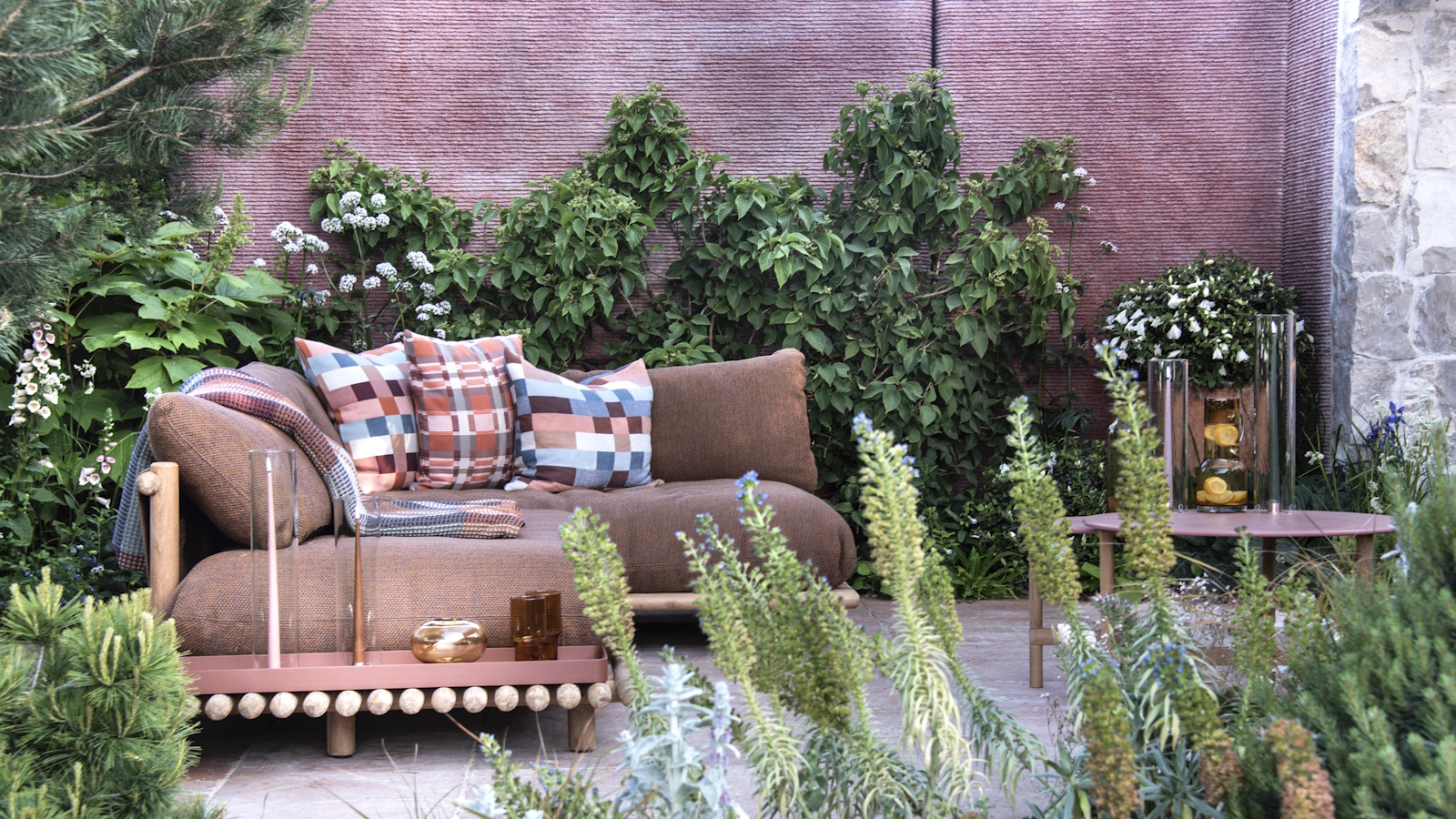
If you are not blessed with ample outside space, the best plants for small backyards outlined ahead could enable you to create an attractive, uncompromising garden that requires minimal maintenance.
And there are so many plants to choose from. When it comes to small garden ideas, every plant, shrub or tree needs to count – and get along nicely with the others. Aggressive or unruly plants can crowd out other species, and create more work for you, in trying to tame them.
Gardening and landscape design experts have offered up some of their favorite flowers and foliage that they recommend for small backyard schemes.
7 of the best plants for small backyards
'When designing small backyards, it’s important to thoughtfully select each plant,' says landscape gardener Laura Janney, CEO, The Inspired Garden. 'Keep in mind that you’ll want plants that will offer long-lasting beauty and won’t overtake the space by spreading aggressively.
'First, I’d recommend starting with shrubs and small trees to provide structure. Then some perennials – opt for varieties that will offer long bloom periods and stay fairly compact. Finally, be sure to add in some annuals. They’re great because they provide bursts of color and can be swapped out each year, so they don’t take up permanent space in the garden.
'The goal is to mix structure, color, and texture while being mindful of spread and size. With the right combination of shrubs and trees, perennials and annuals, even the smallest backyard can feel lush and well-curated.'
1. Bobo Hydrangea (Hydrangea paniculata Bobo)
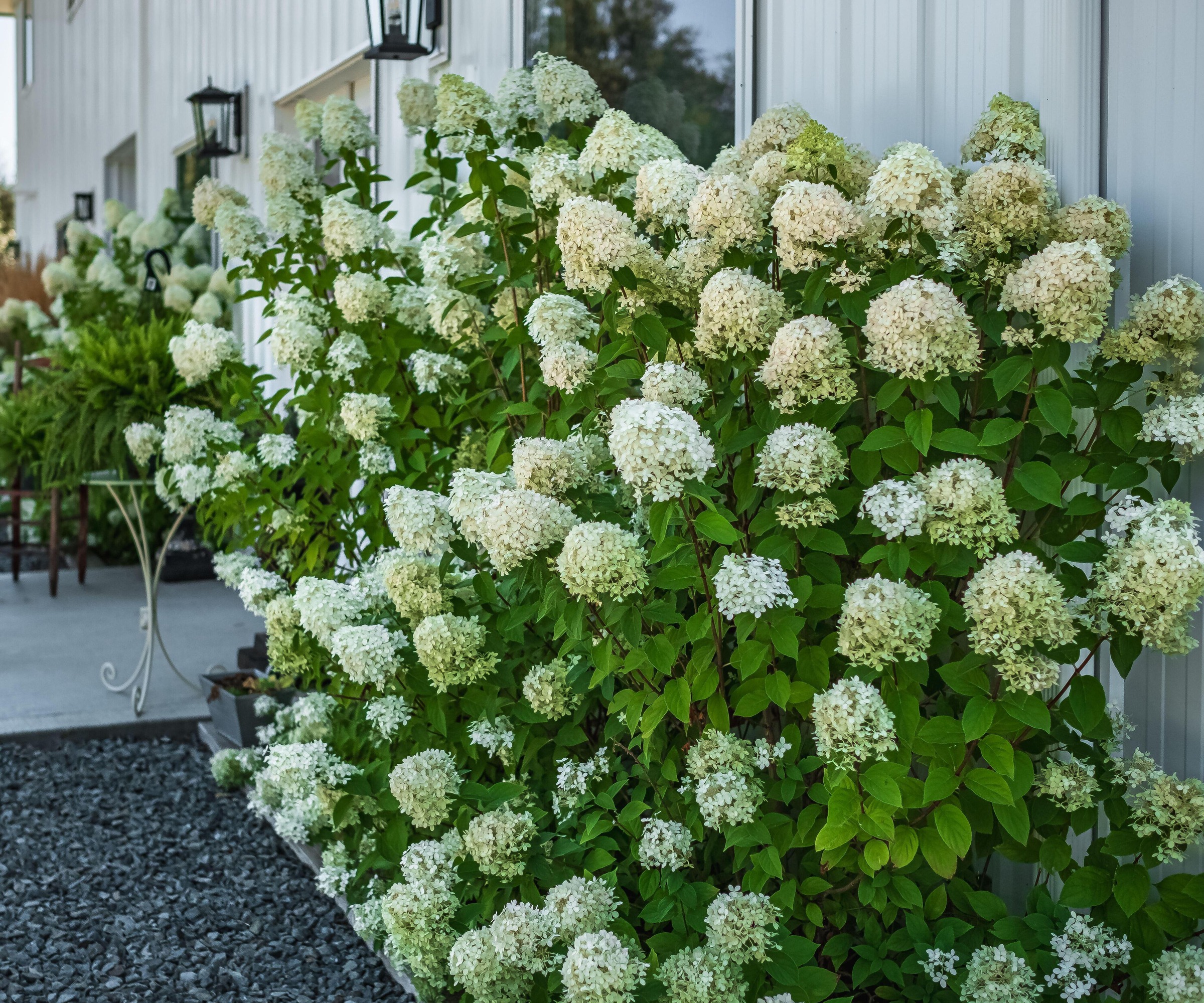
Dwarf varieties of popular plants make a good choice for a small backyard. So if you thought landscaping with hydrangeas was out of the question, consider the Bobo Hydrangea, a more compact version of the paniculata. It still produces big beautiful white flower heads, which eventually turn pink in the fall, but it doesn't grow as tall, as the regular species.
'Bobo Hydrangeas are a dwarf variety that deliver beautiful blooms without taking up too much space,' says Laura Janney. 'Avoid planting them in clay-based or sandy soil, if you can. They do best in moist, well-draining soil that is, rich in organic matter.
'They are weather-hardy shrubs and can withstand cooler temperatures as well as hot temperatures. Be sure to give bobo hydrangeas a lot of sun. However, when it is very hot, they will need some shade, so consider this when choosing where to plant them.'
New plants will require regular watering, so collect rain water with this molded resin rain barrel (50 gallon) from Burpee.
USDA hardiness zones: 3-8
2. Caryopteris
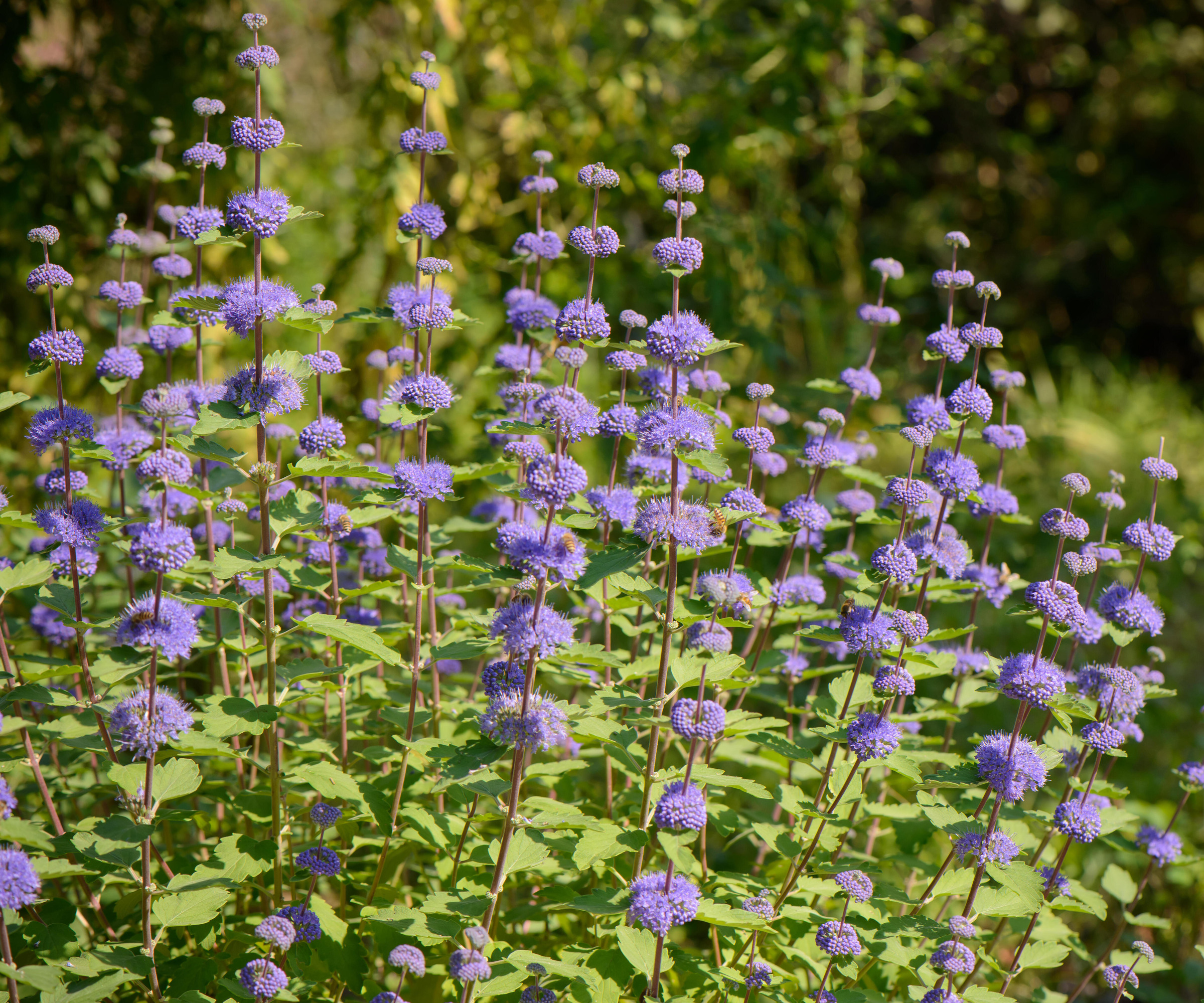
As well as the size and spread of plants, it's worth considering their bloom time, for year-round color in your yard. Popular in cottage gardens, Caryopteris are tall, compact shrubs that bloom later than many other plants, with fluffy purple-blue flowers. These plants do not like soggy soil, so are drought-tolerant – and suitable for container gardening too.
'Caryopteris is a compact, late-summer bloomer that attracts pollinators like bees, butterflies and hummingbirds,' says Laura. 'It does best in well-draining soil. Roots can be prone to rotting if the soil stays too wet and moist.
'Therefore, caryopteris also requires full sun to ensure strong blooming. They can grow as high at 2-4 feet and will spread up to 4 feet as well.'
This Blue Mist Blue Beard Caryopteris from Nature Hills grows smaller than other varieties at around 12-18" tall and 2-3' spread if you're really short on space.
USDA hardiness zones: 5-8
3. Coral Bells (Heuchera)
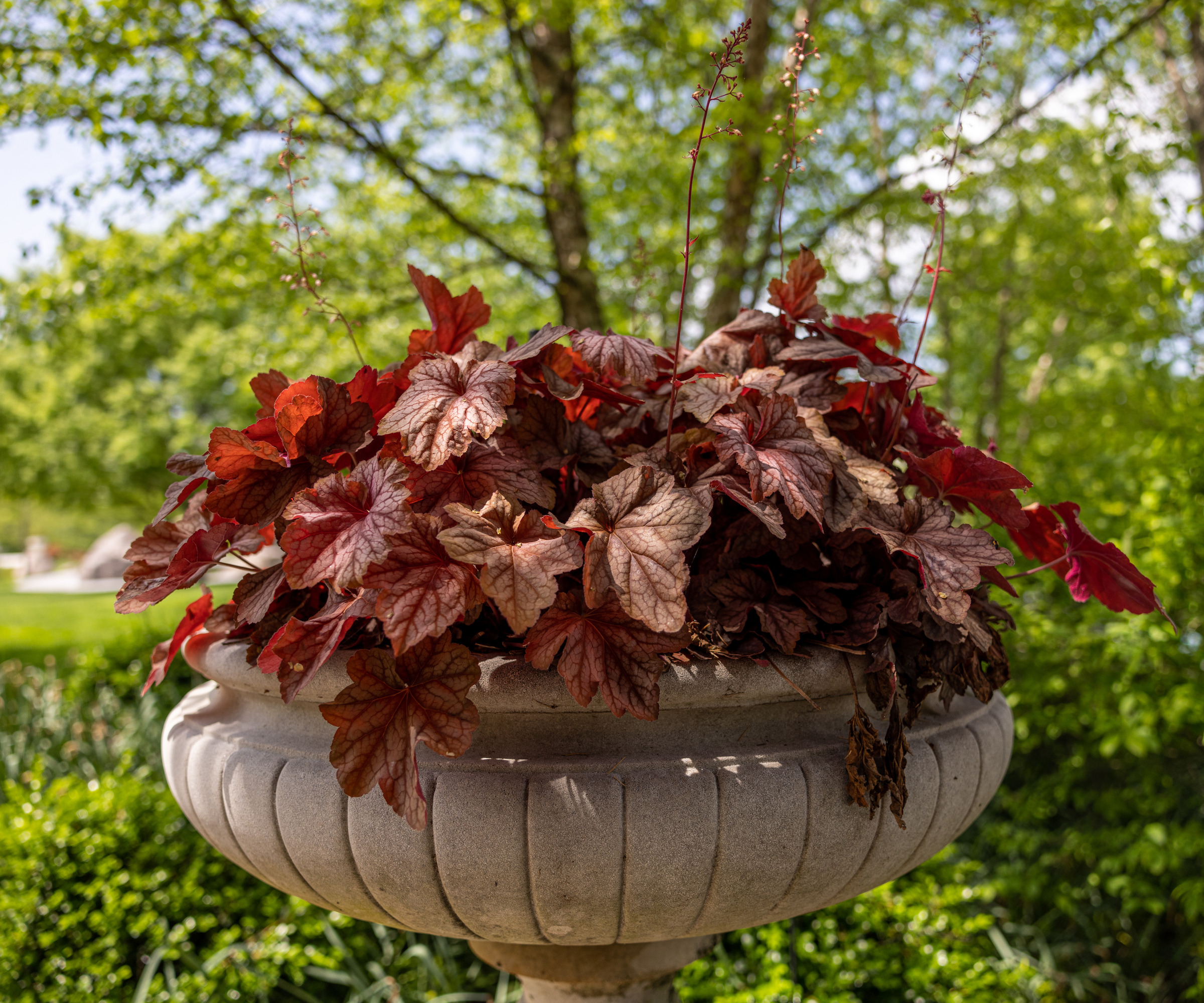
Layering plants of varying heights is a simple way to add interest in a small backyard or courtyard garden. Coral Bells, also known as Heuchera, is a winner in this department, with its beautiful foliage, which forms in low mounds and is available in a wide choice of rich colors. This makes it ideal for filling gaps between taller plants in your flower beds, or for creating eye-catching borders and pots. It will also generally keep its leaves during the winter.
'Coral Bells offer beautiful foliage color throughout the seasons,' says Laura. 'I recommend planting them in “loamy soil” which is a a mix of sand, silt, and clay that locks moisture in, but still drains well.
'These are versatile perennials that do best in partial shade, depending where you live. If it is cooler you can plant them where they will get a bit more sun. However, if you live where it is warmer you can opt for more shade. Coral bells can be winter-hardy with proper care, but do best in 60-75 degree temperatures.'
If you live somewhere where you're going to need to move your Heuchera around when cold weather hits, plant it up in a container, like this Delilah pot from Fast-Growing Trees.
USDA Hardiness zones: 3-9
4. Tickseed (Coreopsis)
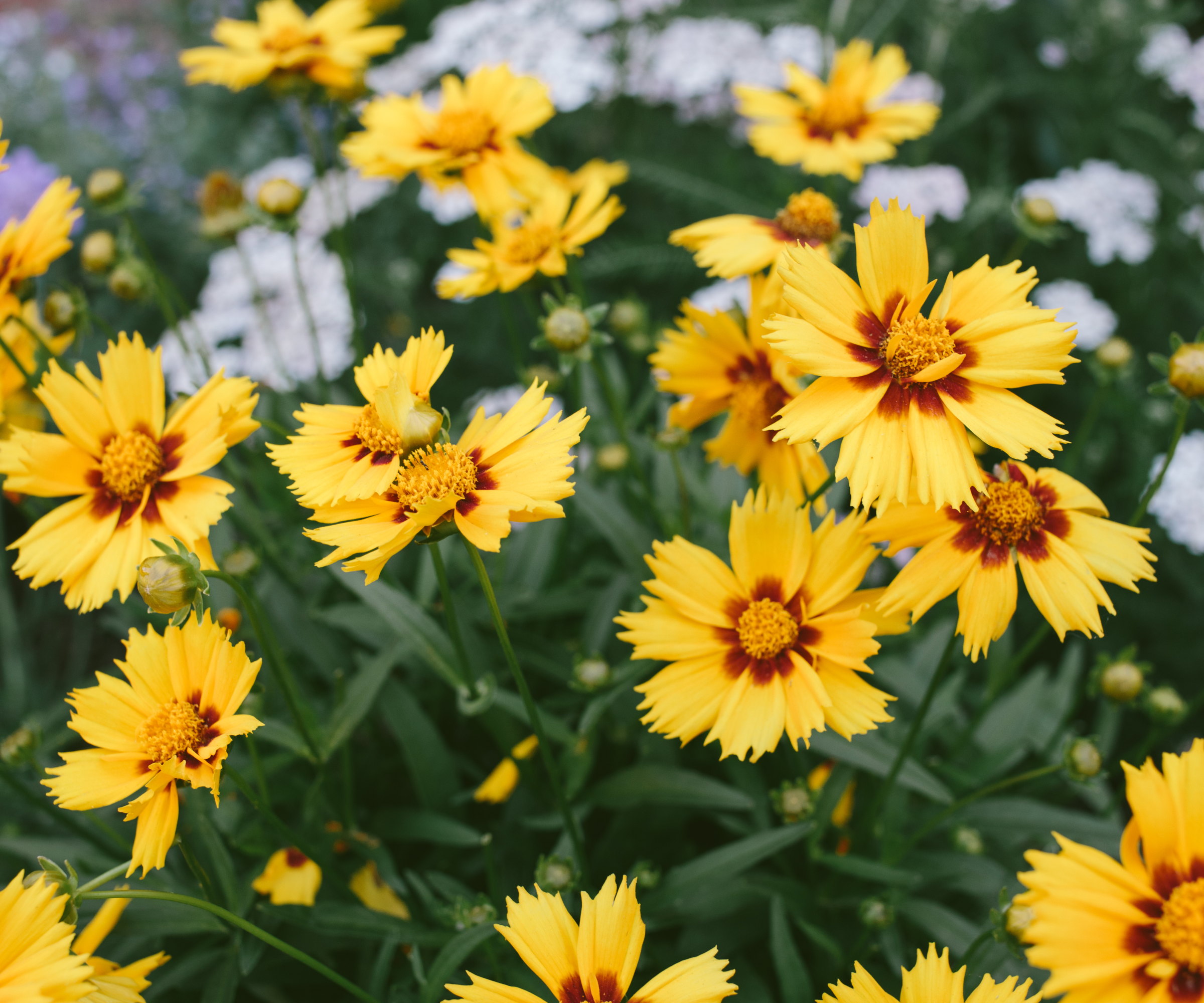
Also known as Tickseed and Calliopsis, these tough, reliable and colorful plants are native to north, south and central America, with various wild and cultivated species suitable for numerous U.S hardiness zones. Some varieties, such as Coreposis tripteris, grow far taller than most, while other species, for example, Coreopsis verticillata ˈZagrebˈ grow lower and more compact to around 30cm tall.
These native plants are popular in prairie gardens, but you don't need lots of space for the smaller varieties, which are suitable for beds, borders and pots.
'Coreopsis is another one of my favorites for its bright, cheerful colors and impressively long bloom time,' says Laura. 'It can be grown as a perennial or as an annual.'
USDA hardiness zones: 4-9
5. Serviceberry (Amelanchier canadensis)
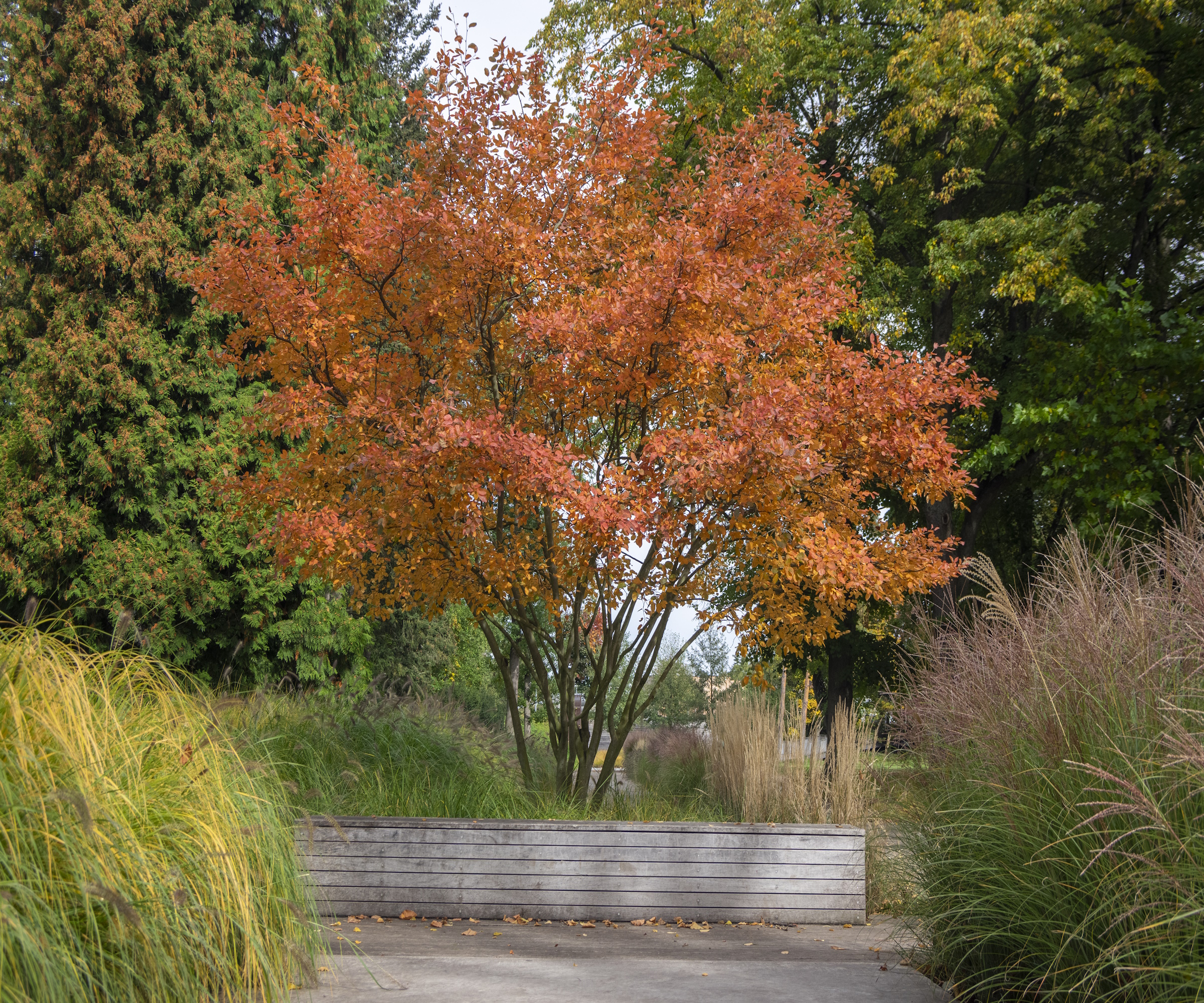
If you have a small backyard, chances are you live in a city, so the Serviceberry tree is a fabulous choice for lots of reasons. Firstly, it can be grown as a shrub or as a small tree, so it can remain compact in size to suit your space. Secondly it's a tough urban tree that will thrive in cities and support pollinators. Lastly Serviceberry is a beautiful native alternative to Japanese maples.
'This multi-stemmed native tree is a total workhorse in small gardens,' says New York-based landscape designer, Kat Aul Cervoni, founder, Staghorn Living. 'I love Serviceberry for it’s delicate white spring blossoms, edible summer berries (birds love them), and gorgeous fall color all the while staying nicely scaled for tight spaces.
'Serviceberry also plays well with underplantings and adds a light, airy canopy without casting too much shade. I like to limb these up to keep them in a tree form, rather than a bushier look.'
USDA hardiness zones: 4-9
6. Ornamental grasses (Carex or Sporobolus heterolepis)
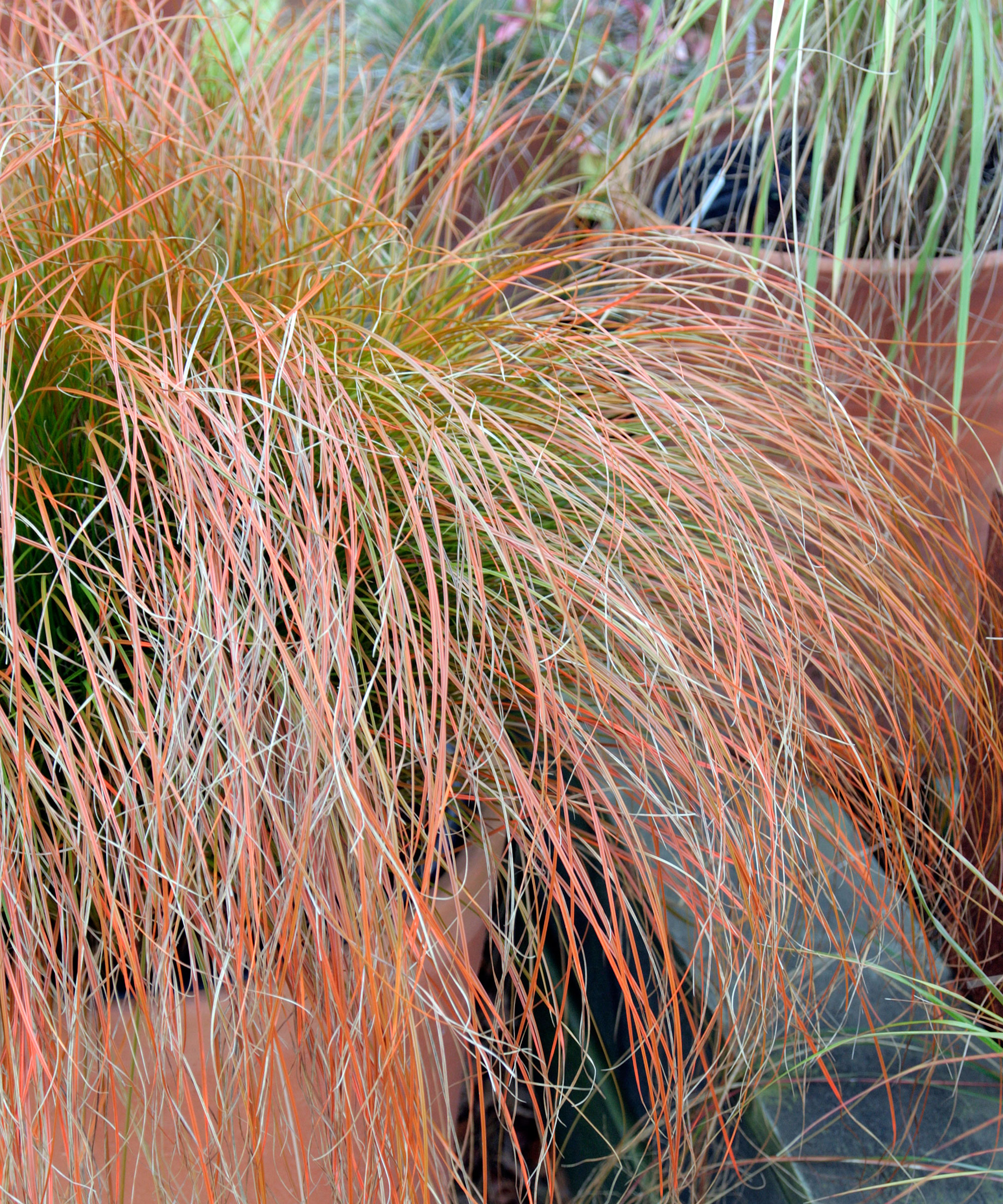
Due to their simple linear structure, ornamental grasses are a wonderful option for those who prefer a sleek, modern look in their garden.
Providing year-round color, without big blousy blooms, ornamental grasses, such as Carex, or prairie dropseed (Sporobolus) tend to stay a manageable size and require little maintenance, so perfectly suit small backyards.
'Grasses bring movement, texture, and structure, and both Carex and Sporobolus stay well-behaved in smaller spaces,' says Kat. 'Carex is great for shadier corners, while Sporobolus thrives in full sun with lovely late-summer blooms and a soft, fountain-like form.
'An extra bonus is that they’re low-maintenance, drought-tolerant once established, and look beautiful all year long.'
USDA hardiness zones: 3-10 (Carex)
USDA hardiness zones: 3-9 (Sporobolus)
7. Catmint ‘Walker’s Low’ (Nepeta faassenii 'Walker's Low)
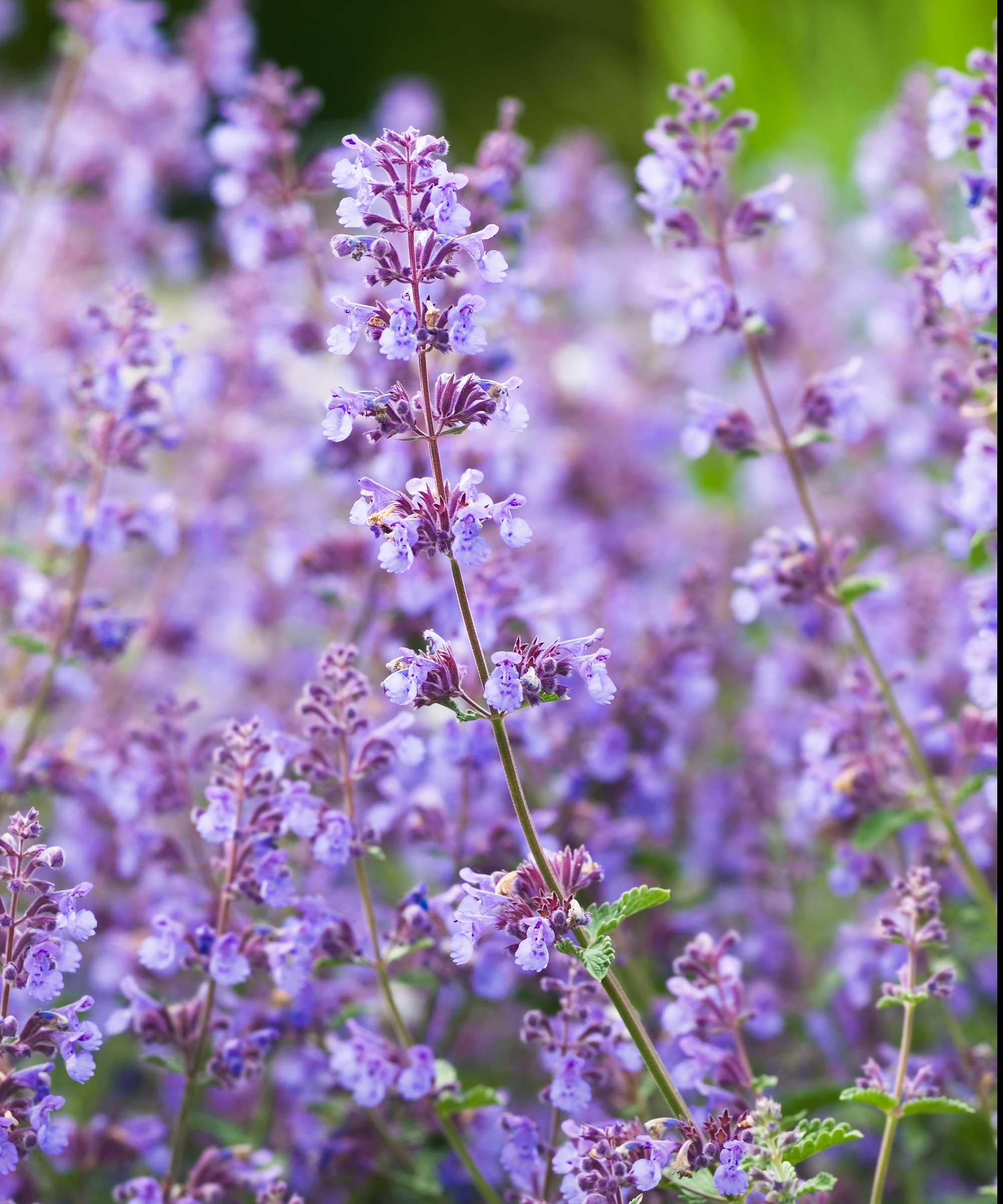
Not to be confused with its cousin Catnip (Nepeta cataria) – which spreads voraciously – Catmint (Nepeta faassenii 'Walker's Low') is a hybrid, which can't be grown from seed, so it won't take over your flower beds.
Catmint also has a more compact, clumping and colorful appearance than Catnip. It won't lure the neighborhood felines to your yard for a fix either, as it doesn't contain the compound (nepetalactone), which drives them wild.
'This long-blooming powerhouse covers itself in lavender-blue flowers from late spring into fall and because of that is one of my most-used plants in small backyards,' says Kat.
'Catmint pairs effortlessly with grasses, roses, or just about any perennial. Bees and pollinators adore it, and it’s wonderfully drought-tolerant to boot.'
USDA hardiness zones: 3-8
Of course, there are many more beautiful plants and trees to choose for a small backyard. These are just some of our gardening experts' favorites. Whatever you choose, ensure it doesn't spread wildly or grow aggressively.
This will reduce the chances of any one plant taking over and smothering other species. It will also cut down on the amount of work you spend pruning back rapid growth.







